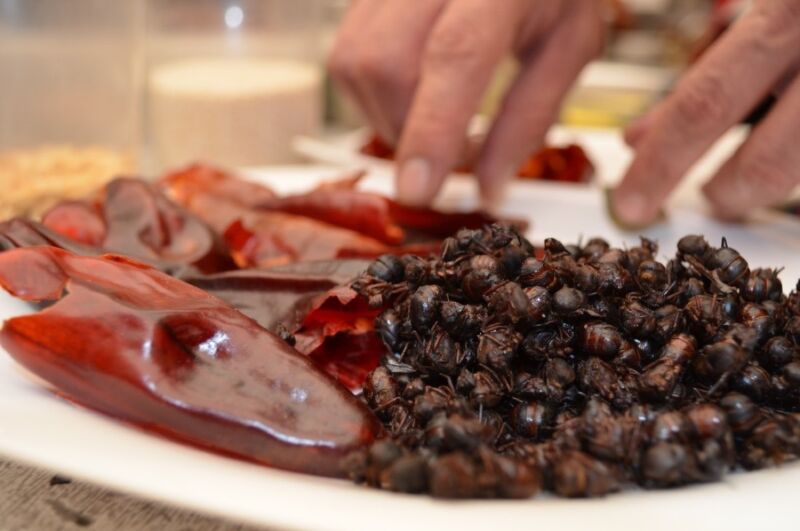
Changqi Liu
Edible insects, like ants, are considered a delicacy in many cultures, as well as being very nutritious and an environmentally sustainable source of protein. But many of us have a longstanding aversion to consuming insects. In hopes of changing that aversion, chemists at San Diego State University (SDSU) have analyzed the flavor profiles of different ant species and found that not all edible ants taste alike, according to their presentation at a meeting of the American Chemical Society in New Orleans.
“We are trying to explore the flavor profiles of different edible ants and to demonstrate how they have very unique flavor profiles instead of all tast[ing] like chicken,” said Changqi Liu, a food chemist at SDSU. “I think if you have tried these edible insects, you will find that they are actually very tasty. They actually can be a very pleasant thing to enjoy.”
Indeed, certain Ars staffers have eaten various kinds of bugs and actually found a few that were palatable. For example, dried scorpions worked well as a salty garnish on crab cakes, while tempura tarantula proved surprisingly tasty. Powdered-cricket-based flour was OK in chips and cheese puffs, but in holiday muffins? Not so much.
Several years ago, the French chef David Faure created an insect-based tasting menu at Aphrodite, his Michelin-starred restaurant in Nice. Adventurous diners could sample “crickets in a whiskey bubble with cubes of French toast and pears” or “squares of peas, carrot foam, and mealworms.” The Michelin critics didn’t share his enthusiasm for insect haute cuisine and took away his Michelin star in 2014. Aphrodite closed its doors for good in 2016.
Faure’s gambit might have failed, but a 2018 study suggested that he had the right idea about appealing to Western diners’ love of luxurious indulgence, presenting the fare as an exotic delicacy rather than as an environmentally sustainable protein source. (Food production accounts for as much as 25 percent of greenhouse gas emissions, with much of that due to livestock. Farming insects could reduce those emissions significantly.)
Specifically, Swiss scientists found that ads that emphasized the pleasurable aspects of eating insects proved far more effective at influencing participants’ willingness to eat a mealworm-stuffed chocolate truffle. Those same participants also rated the taste much higher than people who tried the truffle but saw the ads emphasizing health or environmental benefits. It seems our aversion to eating bugs is emotional rather than rational. So appealing to emotions is a better marketing strategy if the goal is to change consumer behavior.
Liu has picked up the torch for changing the hearts and minds of Western diners after spending a summer doing field work in Oaxaca, Mexico, where the local markets regularly offer various edible insects along with other food ingredients. They’re often used to add texture and flavor to dishes and sauces. So Liu decided to explore the different flavor profiles of common edible insects, given the dearth of prior research on the topic. The goal is to help chefs figure out ways to mask undesirable flavors or odors while boosting the more appealing notes.




















+ There are no comments
Add yours